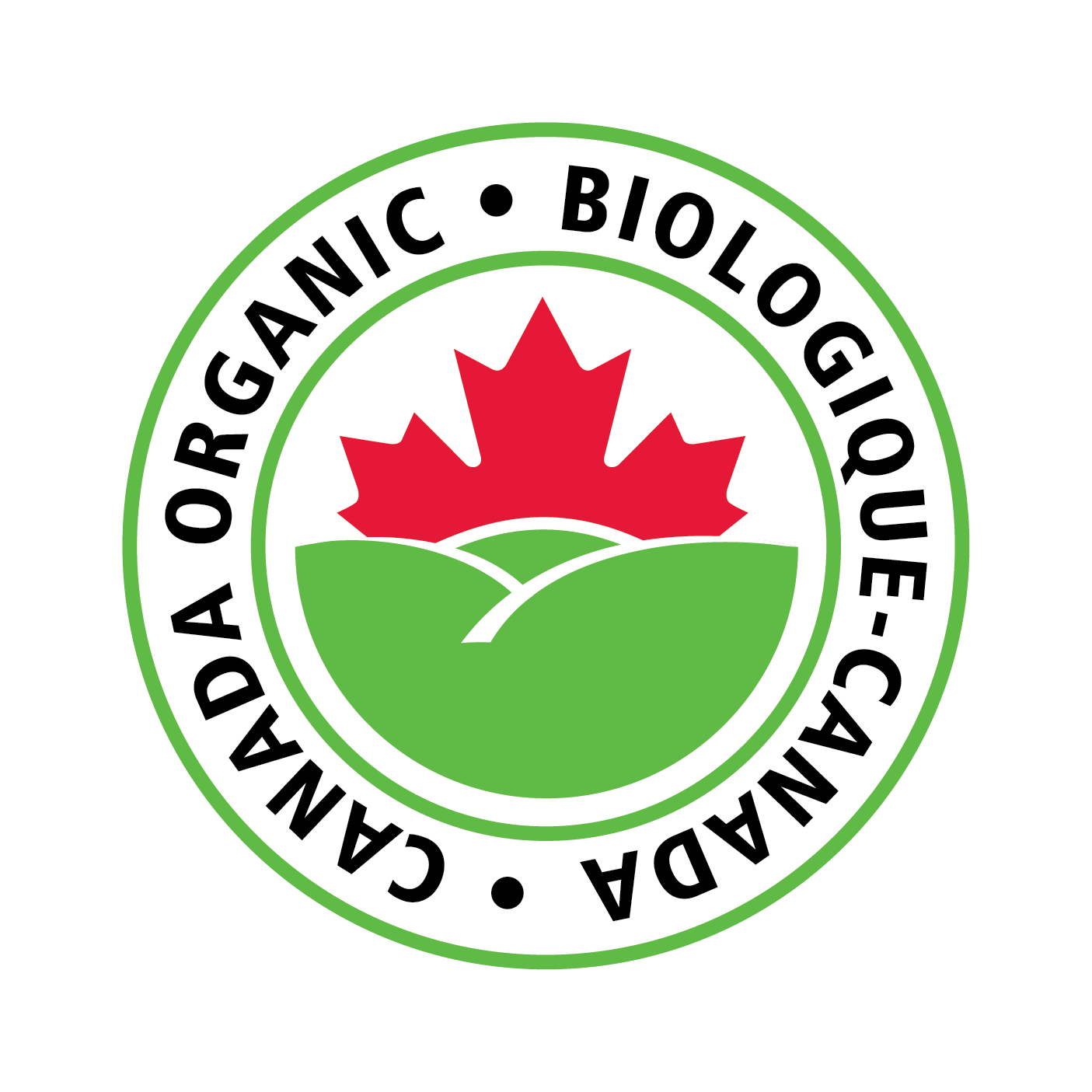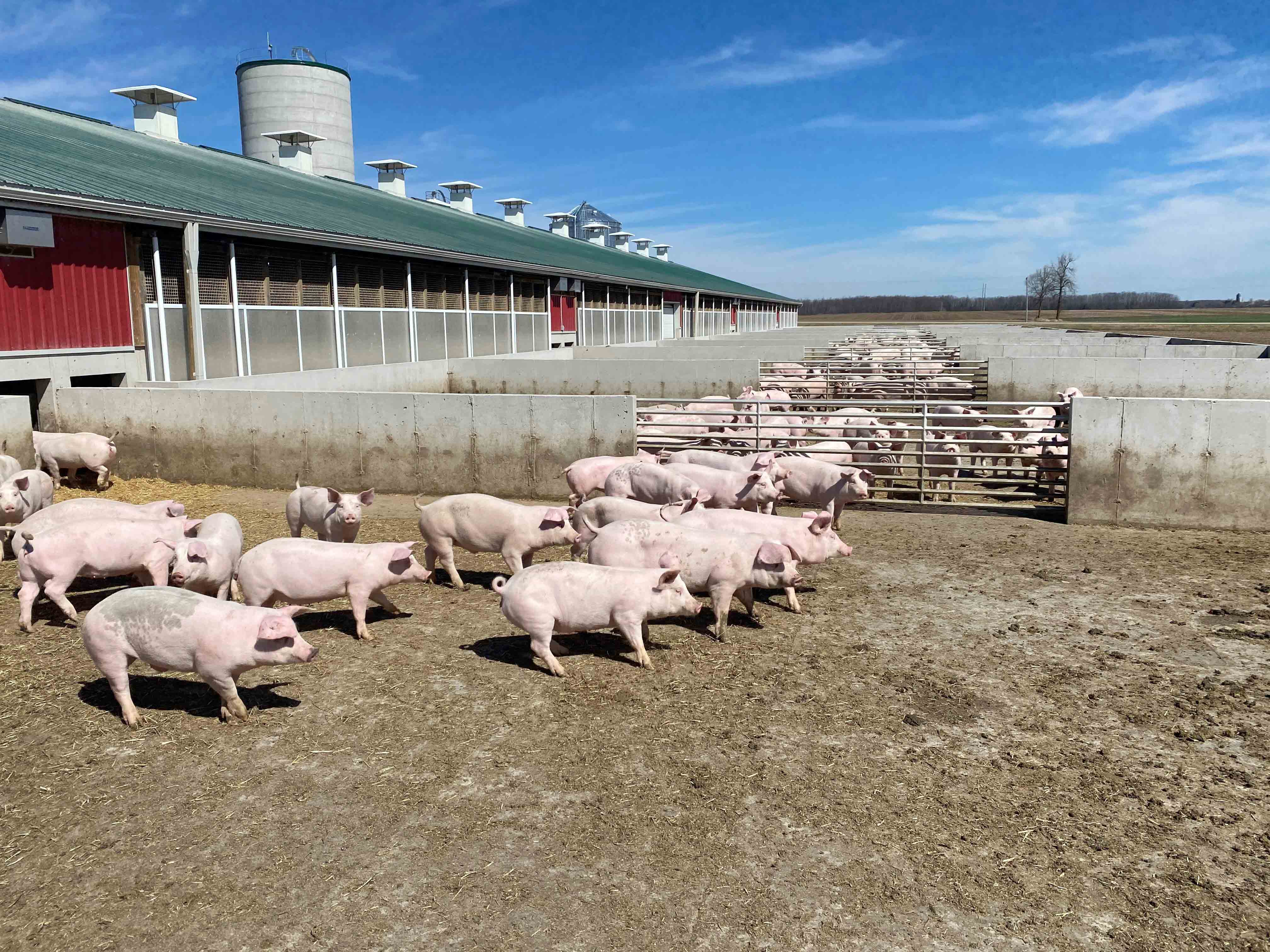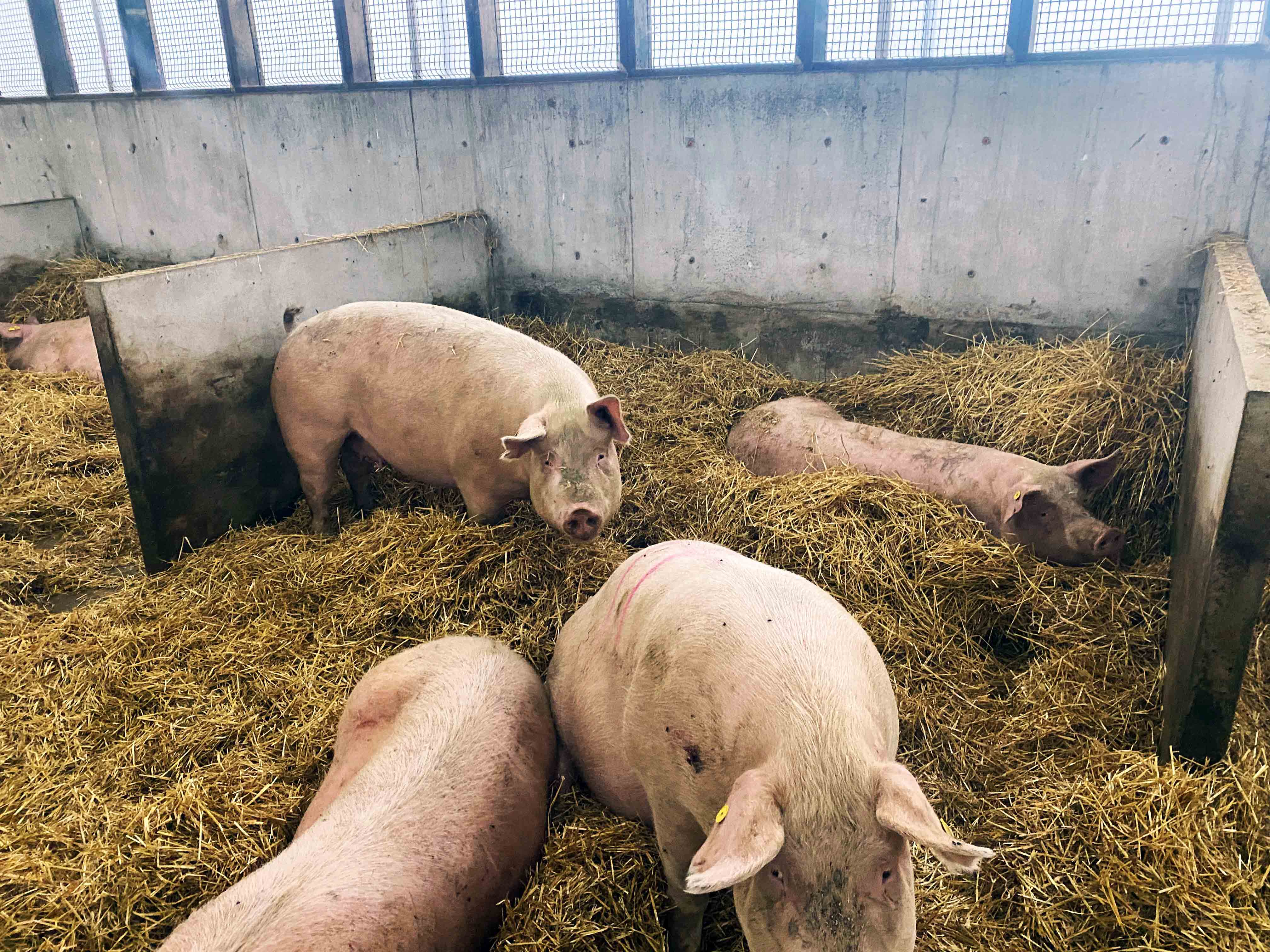Organic pork production in Ontario
Learn about organic pork production in Ontario, including requirements and regulations. This technical information is for commercial pork producers in Ontario.
ISSN 1198-712X, Published November 2021
Introduction
The principle goal of organic production is to develop enterprises that are sustainable and harmonious with the environment
Organic food is still a niche category in Canada, representing approximately 3.2% of the total Canadian food dollar spent on food products
One of the driving forces behind the growth of the organic food market is increased public concern over the safety and quality of foods produced from conventional food production systems. Organic foods are perceived by some consumers as being safer for consumption, better in nutrition and healthier than foods produced by conventional production. Among the other reasons given for buying organic are:
- organic food production is better for the environment
- organic food tastes better
- consumers want to try new products
While most of these claims remain to be proven, more consumers are purchasing organic foods.
The market and demand for organic pork in Canada are also growing, providing opportunities for the pork industry. Purchases of organic meat and poultry grew from 26% in 2016 to 32% in 2020 — the largest increase of any product category
Organic pork production in Ontario
It is estimated that there are about 45 certified organic pork producers in Ontario with a total annual production of approximately 24,000 market hogs. Certified organic hogs produced in Ontario are marketed to processors in Ontario, Quebec and the U.S. Current information shows that, in Ontario, certified organic pork operations range in size from 5 to 300+ sows for farrow-to-finish operations.

Organic pork standards
Through a consultative process with industry stakeholders, the the Canadian General Standards Board (CGSB) has developed Canadian standards for organic agriculture. Aligned with organic standards published in the U.S. and Europe, Organic Production Systems — General Principles and Management Standards includes guidelines for organic pork producers and provides the basis for organic certification. In December 2006, the CGSB first published these regulations. The current version is available from the Government of Canada.
In June 2011, the Canadian Food Inspection Agency (CFIA) began enforcing the standards. A Canadian Organic Office has been established, and the CFIA provides oversight to the process of certifying organic farms and products across the country. Certified products may carry the official Canada Organic logo on their labels (Figure 1).
Organic pork certification
To be able to label and market pork as organic, nationally or internationally, producers must have their operation certified by a certifying body. Not all certifying bodies provide certification services to pork producers.
Some certifying bodies are associated with or accredited by other international organic certifying bodies or organizations. Under the regulations, all accredited certifying bodies must adhere to the Canadian organic standard as the minimum requirement for all organic certification agencies in Canada.
Contact a certifying body for further information on production standards, program requirements and marketing of the products before starting the transition to organic pork production. You can find a listing of some of the agencies that conduct certification of organic foods in Ontario and some organizations associated with organic food.
Organic pork farm inspections
All certification bodies require an inspection of a farm in the year prior to achieving certification status in addition to annual or semi-annual inspections in following years. Like the Canadian Quality Assurance (CQA) or Canadian Pork Excellence Program, organic pork production requires producers to document all production activities and keep detailed records to prove that they are following specific standards and rules.
Transition period to organic
The transition period — the time required to switch an operation from conventional pork production to organic pork production — can be as short as 12 months and as long as 3 years, depending on whether the producer will be growing the organic feed as well. Transition time is a major hurdle for converting conventional pork production to organic pork production,because hogs can’t be marketed as organic during this period, even though they must be raised according to the organic production standards.
General requirements for organic pork production
Living and housing conditions
Generally, all facilities used to raise pigs must meet the animals’ normal socialization, feeding and living requirements. This includes providing sufficient space (Table 1) and regular access to outdoors, sunlight and fresh air, as permitted by weather conditions. A certified organic operation cannot house pigs on 100% slatted floors, in dry sow stalls or in farrowing crates and must provide dry bedding materials such as straw or wood shavings — from organic sources, if available.
| Pig type | Indoor space | Outdoor runs and pens |
|---|---|---|
| Sows and piglets (up to 40Canadian Food Inspection Agencydays old) | 7.5 m2 for each sow and litter | Not required |
| a. Growing pigs up to 30 kg | 0.6 m2/head | 0.4 m2/head |
| b. Growing pigs: 30-50 kg | 0.8 m2/head | 0.6 m2/head |
| c. Growing pigs: 50-85 kg | 1.1 m2/head | 0.8 m2/head |
| d. Growing pigs: greater than 85 kg | 1.3 m2/head | 1.0 m2/head |
| Sows in group pens | 3 m2/head | 3 m2/head |
| Boars in individual pens | 9 m2/head | 9 m2/head |
Source: Organic Production Systems – General Principles and Management Standards.
Canadian General Standards Board. Government of Canada. CAN/CGSB – 32.310 – 2020 Corrigendum No. 1, March 2021
Outdoor areas
Pigs raised under the organic standards must have access to outdoor exercise areas, shade, shelter, fresh air and natural daylight suitable to the species, its stage of production, the climate and the environment (Figure 2).
Outdoor areas may include:
- woodlands
- other natural environments
- soil or concrete exercise areas
Access to pasture is recommended but not mandatory, however, any pasture the pigs use must be managed to avoid soil degradation, long-term damage to the vegetation or water contamination.
Any outdoor areas should be properly fenced and secure. For more information on fencing for outdoor pig production, see the OMAFRA factsheet Fencing for outdoor pig production – protecting your livestock and the environment.
Temporary confinement
The operator of an organic livestock operation may provide temporary confinement for livestock owing to one of the following:
- inclement weather
- conditions where the health, safety or well-being of the animal could be jeopardized, given its stage of production
- risks relating to soil, water or plant quality

Breeds and breeding
Take the following into account when selecting breeds of pigs for organic production systems:
- adaptation of livestock to local conditions
- vitality and resistance of livestock to disease
- absence of disease and health problems specific to breeds
Natural breeding (breeding gilts or sows using boars) is preferred, although artificial insemination (AI) is permitted under organic standards. Embryo transplants and breeding techniques using genetic engineering or related technology are not allowed. The use of injectable reproductive hormones to trigger and synchronize estrus is also prohibited from use.
Pig sources
To meet current organic standards, pigs must be:
- born from certified organic production units, or
- have been born from parents raised under the organic production standards, and
- raised in an organic production system throughout their lives
An exception is pigs used for meat: they must be under continuous organic management from the beginning of the last third of the gestation period (38 days) of the sows.

Additionally, breeding stock must come from organic operations (Figure 3). If organic breeding stock is not available, non-gestating gilts and breeding boars from a non-organic operation may be integrated into the organic system. However, these breeding animals must be raised as organic for 12 months or more in order to be resold as organic breeding stock.
Animal health
Disease prevention is the first line of defence in an organic animal health strategy. Good animal husbandry practices will result in a high level of animal health. Practises include:
- appropriate choice of breeds
- housing conditions
- space allowance
- sanitation practices
- prompt treatment
Vaccines, diseases and parasites
Vaccinations are only allowed when the targeted diseases are communicable and cannot be controlled by other means. When pigs become sick or injured despite preventive measures, they must be treated and isolated.
Due to the requirement for outdoor access, organic pork operations must have a comprehensive plan to minimize parasite problems. The plan must include preventive measures, such as:
- outdoor access management
- fecal monitoring
- emergency measures, in the event of a parasite outbreak
Should preventive measures fail, organic pork producers may use parasiticides not listed in the Organic Production Systems — Permitted Substances List
- observation of the livestock or fecal sample analysis indicate infection with parasites
- the producer has received written instructions from a veterinarian recommending the product and method for parasite control
- treatment withdrawal times shall be twice the label requirement or 14 days, whichever is longer
- there shall be only one treatment for slaughter animals under 1 year old
- the producer provides a written action plan (including timing), describing amendments to the parasite control plan that will avoid similar emergencies in the future
Targeted medicines
Treatment of pigs with specific targeted medicines is allowed and recommended. These medicines are subject to the standards and approval of the certifying body. However, the use of synthetic antibiotics is prohibited for animals designated for organic pork. The producer must record all treatments in detail, such as:
- animal identification numbers
- substance name
- dosage
- dates the treatment was given
- duration of the treatment
- results of the treatment
The standards permit castration and other surgical treatments, such as tagging, of the pigs at the youngest age possible to avoid any undue animal suffering. The standards prohibit tail-docking and cutting of teeth unless required for herd safety and health.
When preventive practices and veterinary biologics are inadequate to prevent or treat sickness, the well-being of the animal must be protected. All appropriate medications, including the use of drugs that are not acceptable to organic production, must be used. Pigs treated with prohibited substances, such as synthetic antibiotics, at any stage of the production must be removed from organic herds or permanently identified and cannot be marketed as organic pork. Treating pregnant sows with medications or veterinary biologics within the first two-thirds of pregnancy may be allowed, however, the meat from these treated animals cannot be marketed as organic nor can the sows be sold as organic breeding stock.
Feed and water
Organic feed shall consist of substances that are necessary and essential for maintaining the pigs’ health, well-being and vitality and meet the physiological and behavioural needs of the pigs. This includes the need for roughage and fresh/dried fodder or silage in the daily ration. All feed ingredients used must be certified as being produced, handled and processed in accordance with the standards specified by the certifying body. Pig diets must not include:
- feed medications
- growth promoters
- lactation promoters
- synthetic appetite enhancers
- animal by-products
- preservation agents
- colouring agents
- genetically engineered or modified organisms (GMOs) or their by-products
For information on substances permitted in organic pig diets, check the Organic Production Systems — Permitted Substances Lists
Transport and handling
Producers must handle pigs humanely and responsibly according to provincial and federal laws, regulations or guidelines and the requirements set by the certifying body. Pigs should be transported and handled to minimize stress, injury and suffering. This can be accomplished by using direct, short transportation routes and providing bedding and suitable shelter against inclement weather conditions. The use of electrical stimulation or calming drugs is prohibited. Pigs too ill to be transported are to be humanely euthanized on‑farm.
Other requirements
There are other requirements included in organic standards guidelines that you should consider, such as:
- manure management
- pest management
- parasite control
Summary
Consumer demand for organic pork is rising. Some pork producers may wish to capture part of this niche market. The information on organic pork requirements presented here is only a general overview. For detailed information, see
This factsheet was updated by Mario Mongeon, Bilingual Livestock Specialist, OMAFRA and Laura Eastwood, Swine Specialist, OMAFRA.
Footnotes
- footnote[1] Back to paragraph Government of Canada. Organic Production Systems: general principles and management standards. 2020.
- footnote[2] Back to paragraph Canada Organic Trade Association Press release October 5, 2020.
- footnote[3] Back to paragraph Government of Canada. Organic Production Systems: permitted substances lists. 2020. (CAN/CGSB-32.311-2020).